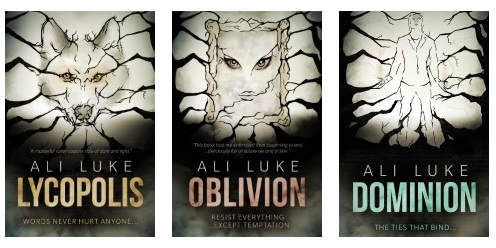How to Choose and Develop a Writing Idea [With Examples]

This post was originally published in May 2011 and updated in November 2021.
How do you figure out whether one of your writing ideas is worth pursuing or not? Maybe you’ve got a bunch of different ideas for short stories or even for novels, or perhaps you’re coming up with possible blog posts or articles to write.
When it comes to blogging, I use perhaps a quarter of my ideas. The rest get discarded somewhere along the way. With fiction, it’s probably similar (though I don’t tend to even write down ideas unless they grab me in some way). There are lots of things I could write about, some of which might be perfectly good ideas … but my time is definitely finite.
Use or Lose? How to Sift Through Your Ideas
When you’re deciding whether or not to use an idea, you’ll want to consider:
#1: Does it Interest You?
If an idea leaves you feeling uninspired and bored, then it’s probably not worth pursuing. Don’t write something because you feel like you should.
If you’ve got an idea that you think you do want to stick with, even though it doesn’t interest you, look for an angle that makes it more attractive.
#2: Can You Write It?
Some ideas are interesting and engaging … but they might be a struggle for you to write. Personally, I ditch any ideas that require too much research: I much prefer the actual writing part of the process.
Even if you can’t easily write something now, keep the idea: you might find that, one day, you’ve gained the writing skills or the subject knowledge to tackle it.
#3: Will it Find an Audience?
This isn’t always a consideration – but if you’re writing for money, then you need to keep in mind the market potential of your idea.
When I’m deciding what to blog about, or what resource to create next, I look at what resonates with my readers. Sometimes I run surveys to find out which of my ideas will be most popular. With fiction, I’m trying to position my newer work in specific genres.
Remember, ideas aren’t in themselves “bad” or “good” – they’re right for you and your audience or they aren’t.
Once you’ve picked an idea that excites you – and that’s going to suit your audience, if applicable – then it’s time to turn it from an initial spark into a plan.
Developing an Idea
There are plenty of ways to flesh out ideas, but I’m going to take you through three of my favourites – they should work for fiction and non-fiction writing projects.
If you’re writing something short (like a blog post or a short story) you can pick one of these methods and plan out the whole thing. If you’re writing something longer (like an ebook or a novel) these techniques will give you a good starting point.
#1: Draw a Mindmap
A mindmap can be as simple or as complex as you want. I usually draw mine on paper, putting the core of my idea in the centre of the page and jotting down thoughts around the side.
Mindmaps are great ways to bring the right side of your brain – your creativity – into play. A mindmap lets you look at different possibilities, form connections, and come up with more ideas as you’re working.
Try it:
Get a piece of paper and flesh out one of your ideas. Or, if you prefer, use a piece of software like XMind (the basic version is free).
Example:
Here’s how a mindmap could look for the blog post idea “How to Find Your Writing Voice”.

#2: Ask Questions
If you’re struggling to come up with the sub-points for your blog post or the plot points for your story, then start asking questions.
For non-fiction, you can ask questions like:
- What does the reader already know – and what do I need to tell them?
- Why is this particular topic important?
- How can I break this down into simple steps for the reader?
For fiction, you can ask questions like:
- Who’s the hero of this story?
- What obstacles are standing between the hero and his/her goal?
- How can I make the reader really care about the outcome?
As you ask questions, you’ll find that your idea becomes clearer in your mind.
Try it:
Pick one of your ideas and start asking yourself questions. You can use the ones above to get you going, if you want.
Answer the questions in writing – don’t just think through the answers. You’ll be pushed to think more rigorously, and you’ll have a record of your ideas.
Example:
Writing Magazine currently has a competition for an “epistolary short story”. That could be told through diary entries, letters, or social media posts, text messages, or other more modern forms.
Some immediate questions come up for me when I look at that idea:
Why are the characters only communicating through text? Do they talk to one another (face to face or on the phone) during the story?
Will the timing of communications matter? What if a message goes astray?
How can the characters’ individual personalities be shown through the way in which they send messages … or even through the mediums they choose?
Will the conversation be private (e.g. texts), a group conversation (e.g. WhatsApp), or a public conversation (e.g. in a blog’s comments section)?
All those questions can help develop the idea and take it in a particular direction.
#3: Create an Outline
Some ideas are fairly straightforward. You might have a clear(ish) picture of what to include already. If that’s the case, a simple outline might be enough to flesh your idea out.
An outline is just a linear list, in order, of the main points that you want to cover. These key points can often become your subheadings or chapters.
Your outline can be very high-level (e.g a list of ten chapters for an ebook) or very detailed (a list of subsections for each chapter with several bullet points for each).
Try it:
Choose one of your ideas and create an outline: write down three – five key points that you want to cover, in order. (Don’t worry too much about the order being exact: you can always change it later.)
Example:
Here’s the outline I used for my post Internal and External Conflict: Why Your Story Needs Both (and How to Do Them Well):
- Introduction
- Why is Conflict So Important in Your Story?
- Different Types of Conflict Make Your Story more Interesting
- What’s Internal Conflict?
- What’s External Conflict?
- Using Internal and External Conflict Effectively in Your Story
Coming up with ideas is, for many writers, the easy part! Choosing and developing an idea can be much harder. If you’re struggling to pick, give yourself a bit of time. Let your ideas “rest” for a few days or weeks … then come back to them. You might just find that one jumps out at you.
For more help with coming up with ideas, developing them, and getting the writing done, check out Get Writing. It’s a set of four guides to different areas of writing: blogging, short stories, novels, and freelancing … plus a whole bundle of extra goodies. If you want to dip into any of those areas (or go further with them), then this is the resource you need. Find out more here.
About

I’m Ali Luke, and I live in Leeds in the UK with my husband and two children.
Aliventures is where I help you master the art, craft and business of writing.
Start Here
If you're new, welcome! These posts are good ones to start with:
Can You Call Yourself a “Writer” if You’re Not Currently Writing?
The Three Stages of Editing (and Nine Handy Do-it-Yourself Tips)
My Novels

My contemporary fantasy trilogy is available from Amazon. The books follow on from one another, so read Lycopolis first.
You can buy them all from Amazon, or read them FREE in Kindle Unlimited.


I’ve tried mind mapping many times, but just can’t get into it. But, I do my own visual diagrams (same, but different concept). Always trying different things though to see what I might be missing. Thanks for sharing.
Randy Cantrell’s last blog post ..Episode 89 – The Will To Win- Let Failure Fuel Your Confidence
I think the main thing is to find techniques which DO work comfortably for you (while remaining open to trying new things) — sounds like you’ve already got the hang of that, though. 🙂
Great tips, Alli! I love this.
Jeff Goins’s last blog post ..What to Do if Your Blog Ever Gets Hacked
Thanks!
Ali,
Thanks for sharing. Once again, this is a great post. You have rolled up your sleeves on this one–good work.
It is important to read biographies and autobiographies of famous people, even celebrites. Readers want to know how they achieved success and wealth. That’s because it is human nature to want to be like your icons or idols.
For example, let me contribute a few names here: Richard Branson, Bill Gates, Steve Jobs, Sultan of Brunei, Bill Clinton, Dhirubhai Ambani, Napolean Bonaparte, Thomas Edison, Ted Turner, Howard Hughes, and others.
Each story needs to be treated on a case-by-case basis, because each and every individual is unique here–just like no two snowflakes are exactly the same.
Your job should be, as a writer, try to find out the similarities in their sagas. Nobody had it easy: their lives were full of challenges. There were ups and downs, both personally and professionally. How did these people overcome obstacles? How did they convert a losing hand into a winning hand?
You are bound to find some common ground here. They all used certain techniques and skills to overcome challenges; they fought against the odds and won. Once you find that, maybe you can write a guest post like–“12 techniques VIPs use to reach their goals.” Feel free to change the title. The important thing is to get my point.
Henri Juntilla of Wake Up Cloud excels at this game. After all, he was a poker player once upon a time. He knows how to gamble and win against the odds. There can be variations on this theme, of course. Cheerio.
Some great names there, Archan — thanks! And I agree, it’s inspiring to hear about people overcoming the odds, working hard and achieving their goals.
Hai Ali, Great posts.
Midhun Devasia’s last blog post ..How Do I Become a Vegetarian
Thanks for covering this topic. Asking myself those questions about my idea are going to be very helpful!
Glad to help! 🙂
Hey Ali,
Been reading your blog for a few weeks now, and I have to say it’s pretty motivating. I’m currently preparing one of my own; it’s probably in great part thanks to you 🙂
I currently study art at Paris (learning to be a contemporary/post-contemporary artist); mind maps are one of my favourite creative mediums (I create huge introspective mind maps on 100*70 cm sheets of paper – those ones aren’t just tools, they’re actual artworks in and of themselves). Thus, I am starting to enjoy mind mapping a lot.
I’ve discovered that one of the few things that frustrate me a lot about mind mapping softwares is the impossibility (at least as far as I know) to link elements without obeying hierarchy. Each element has a parent and, sometimes, children; it cannot have two parents. I find this aspect… limiting? From my point of view, the main advantage of mind maps is their ability to create new “idea sparks” by combining elements from different branches of the diagram (through a visual link), effectively removing the need to remember the actual source (initial term) of the mind map – you end up with a web of sorts. I call this kind of interconnectedness rhizomatic connexion (as an homage to Gilles Deleuze’s rhizome theory).
To sum things up… my current opinion about mind mapping software (based on my experience so far – I’m asking to be proved wrong on this one!) is that they don’t go far enough.
Incidentally, I am enjoying this series of posts about ideas a lot. Thanks a lot for sharing these tips!
Kalista
Thanks Kalista!
Yes, I’ve had the same problem with hierarchy — and I tend to mindmap on paper if I’m doing anything more than outlining a post.
Glad you’re enjoying the series! 🙂
Great post! I’ve really enjoyed this mini-series, what a wonderful resource. I think the fiction series would be a big hit, while there is a plethora of articles and books on the subject I do find that each writer that has approached the subject has been able to add something new. After all expanding our knowledge and skill at craft is the key to well-presented content that others will want to read so how could there possibly be “too much” on the subject.
Gene Lempp’s last blog post ..Blog Treasures 05-21
Thanks Gene! I’ll have a think about the fiction series … there is indeed rather a lot already on the subject, though I guess there’s always the chance to voice things differently.
It took a combination of 5 books and dozens of articles to get everything together in my head. Everyone of them was valuable. Some refined earlier concepts, some deepened them, others brought in a new angle or approach to explaining an idea. Together, just as in fiction, they combined to a full understanding in the end. Just a thought to consider.
Gene Lempp’s last blog post ..Blog Treasures 05-21
that’s a very Interesting Post Ali
you just connected all the important elements together neatly.
when i write i try to find a combination of 1) an idea that is inspiring 2) one that is easy to write about 3) one that i know about well
thanks for the insight 🙂
Thanks Farouk, I think that’s a great way to pick a post idea 🙂
When I’m writing blog posts, I’ll write them in bullet points, and then expand each one to make the entry coherent. If I’m doing a short story, I’ll write a single line for each plot point, and then write the “connecting sections”. That’s normally how I develop those ideas. Now, I had an idea on Saturday night for a “what if?” character and before I knew it, I’d done the mind mapping in my head and have a new idea for a novel, too. Sometimes an idea will just consume you and you know it’s the one to pursue because it almost seems to develop itself!
Icy Sedgwick’s last blog post ..Photo Prompt 34
Yeah, I know what you mean about ideas just taking over! I find that I do less planning with fiction projects than non-fiction ones (or, rather, I *do* try to plan, but I inevitably veer off in some different direction after a couple of chapters … my characters never turn out to be quite who I think they are!)
Ali,
I’m glad I could join the conversation!
I’m always looking for topics within my niche that my readers will find interesting. If a person is really passionate about their topic, sometimes all it takes thinking about past experiences. I usually start there for the brainstorming process.
Vic’s last blog post ..A New Awareness On Bullying
Hi Ali,
I have picked up writing again, and I can’t tell you how many issues I am facing. Finding out the best ideas was an issue even before, and now that I am starting it has become an even bigger issue. I think I will be using your article to create a form and I will use it as a template to decide between all my ideas. So, thanks a lot for taking the time and sharing your process. I really hope your tips help me identify good ideas and help me kickstart my writing project.
Thanks John, I hope the suggestions in the post prove helpful for you. And it’s great to hear you’re writing again! Best of luck choosing and developing your ideas. 🙂